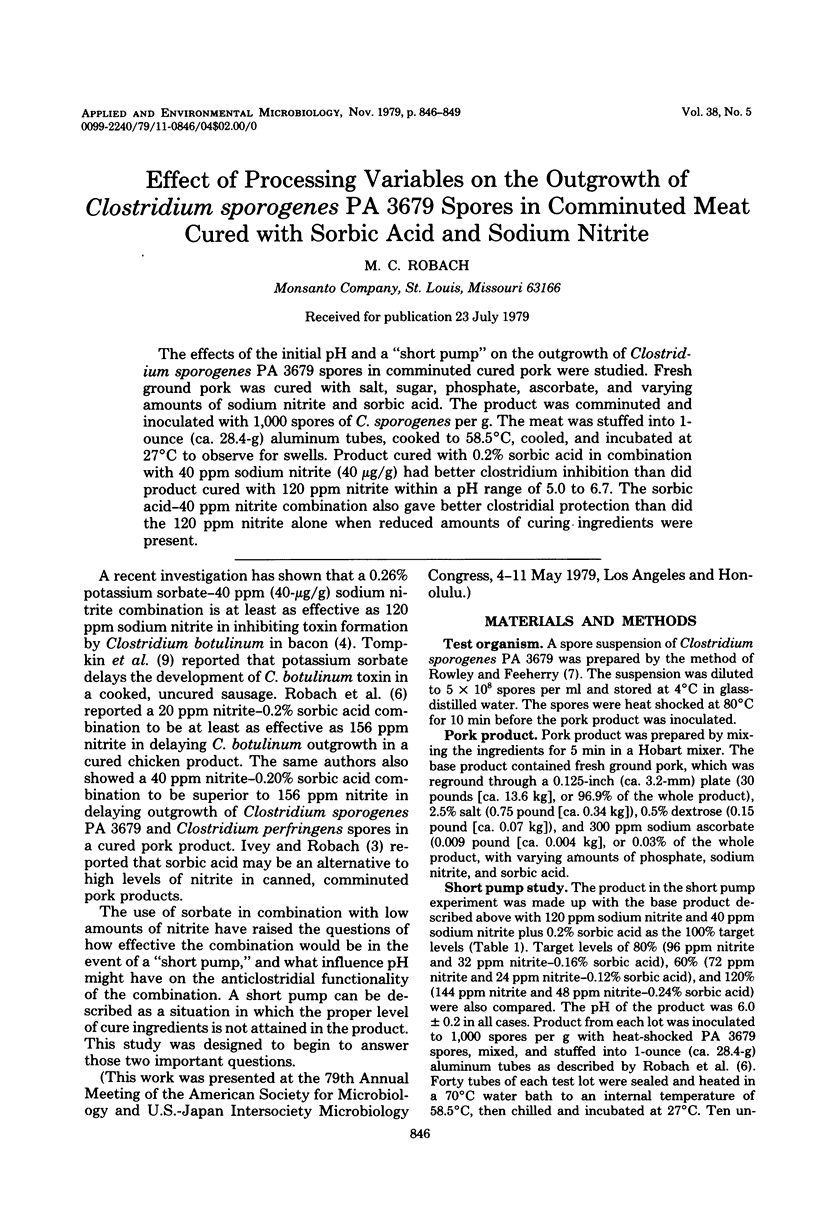Abstract
The effects of the initial pH and a "short pump" on the outgrowth of Clostridium sporogenes PA 3679 spores in comminuted cured pork were studied. Fresh ground pork was cured with salt, sugar, phosphate, ascorbate, and varying amounts of sodium nitrite and sorbic acid. The product was comminuted and inoculated with 1,000 spores of C. sporogenes per g. The meat was stuffed into 1-ounce (ca. 28.4-g) aluminum tubes, cooked to 58.5 degrees C, cooled, and incubated at 27 degrees C to observe for swells. Product cured with 0.2% sorbic acid in combination with 40 ppm sodium nitrite (40 microgram/g) had better clostridium inhibition than did product cured with 120 ppm nitrite within a pH range of 5.0 to 6.7. The sorbic acid-40 ppm nitrite combination also gave better clostridial protection than did the 120 ppm nitrite alone when reduced amounts of curing ingredients were present.
Full text
PDF



Selected References
These references are in PubMed. This may not be the complete list of references from this article.
- Christiansen L. N., Johnston R. W., Kautter D. A., Howard J. W., Aunan W. J. Effect of nitrite and nitrate on toxin production by Clostridium botulinum and on nitrosamine formation in perishable canned comminuted cured meat. Appl Microbiol. 1973 Mar;25(3):357–362. doi: 10.1128/am.25.3.357-362.1973. [DOI] [PMC free article] [PubMed] [Google Scholar]
- Christiansen L. N., Tompkin R. B., Shaparis A. B., Kueper T. V., Johnston R. W., Kautter D. A., Kolari O. J. Effect of sodium nitrite on toxin production by Clostridium botulinum in bacon. Appl Microbiol. 1974 Apr;27(4):733–737. doi: 10.1128/am.27.4.733-737.1974. [DOI] [PMC free article] [PubMed] [Google Scholar]
- Pierson M. D., Payne S. L., Ades G. L. Heat injury and recovery of vegetative cells of Clostridium botulinum type E. Appl Microbiol. 1974 Feb;27(2):425–426. doi: 10.1128/am.27.2.425-426.1974. [DOI] [PMC free article] [PubMed] [Google Scholar]
- Robach M. C., Ivey F. J., Hickey C. S. System for evaluating clostridial inhibition in cured meat products. Appl Environ Microbiol. 1978 Jul;36(1):210–211. doi: 10.1128/aem.36.1.210-211.1978. [DOI] [PMC free article] [PubMed] [Google Scholar]
- Rowley D. B., Feeherry F. Conditions Affecting Germination of Clostridium botulinum 62A Spores in a Chemically Defined Medium. J Bacteriol. 1970 Dec;104(3):1151–1157. doi: 10.1128/jb.104.3.1151-1157.1970. [DOI] [PMC free article] [PubMed] [Google Scholar]
- Tompkin R. B., Christiansen L. N., Shaparis A. B., Bolin H. Effect of potassium sorbate on salmonellae, Staphylococcus aureus, Clostridium perfringens, and Clostridium botulinum in cooked, uncured sausage. Appl Microbiol. 1974 Aug;28(2):262–264. doi: 10.1128/am.28.2.262-264.1974. [DOI] [PMC free article] [PubMed] [Google Scholar]


